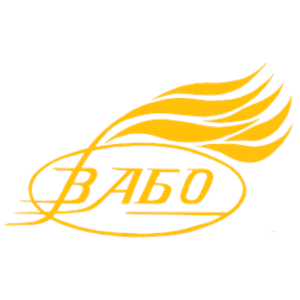AGRO-ENVIRONMENTAL AND ECOTOXICOLOGICAL ASSESSMENT OF AGRICULTURAL SOILS OF AGROSPHERE
DOI:
https://doi.org/10.32782/2786-5681-2024-2.01Keywords:
soil, heavy metals, hazard ratio, agroecological indicators, agroecological condition, pollution, environmentAbstract
Soils are the main component of terrestrial ecosystems that have been formed over geological time as a result of biotic and abiotic factors. Today, the issue of soil protection is particularly relevant in connection with the growth of the global population and uneven food security. Therefore, maintaining and improving soil fertility, providing the soil with agrochemical indicators within normal limits (pH, humus, nitrogen, phosphorus, potassium), preventing their depletion, erosion, salinization, waterlogging and pollution by toxic substances are key to achieving higher yields, increasing the number and purity the environment Therefore, the main challenge today is the rational use of land and potential resources in agricultural production, which requires appropriate scientific support. Implementation of measures to prevent soil pollution by heavy metals, pesticides, industrial emissions, strengthening the responsibility of land users and owners for the rational use and protection of land; increasing the productivity of agricultural land by optimizing the sown areas and the structure of crop rotation to increase the productivity of agricultural land, implementing state control over measures to protect and restore soil fertility – all this is a necessary condition for monitoring the condition of the soil. The purpose of the work is to conduct a comparative characterization of the ecotoxicological and agroecological state of the soils of the agrosphere (on the example of the soils of the village of Sytkivtsi of the Raigorod Territorial Community of the Haysyn District of the Vinnytsia Region). Research methodology. Laboratory analyzes were carried out in a certified and accredited laboratory – the Scientific and Measuring Agrochemical Laboratory of the Educational and Scientific Institute of Agrotechnology and Environmental Sciences of the Vinnytsia National Agrarian University. Observations, records and measurements were carried out according to generally accepted methods: determination of the content of mobile forms of heavy metals (Pb, Cd, Zn, Cu) – after extraction with an acetate-ammonium buffer solution pH 4.8 by the method of atomic absorption spectrophotometry in accordance with SSU 4770. The research was conducted on the territory of the village of Sytkivtsi, Raigorod territorial community, Haysyn district, Vinnytsia region. Samples for analysis were taken at three points in the village Sitkivtsi, in order to find out the potential pollution on the territory of the territorial community and to compare the values with the values of a potentially clean homestead: homestead – area of 0.18 ha (organic fertilization – humus, siderates) open joint-stock company Sitkovetsky Sugar Plant (production and sale of products discontinued 17 years ago) and solid waste landfill (sanctioned). Scientific novelty. The conducted research made it possible to determine the agro-ecological indicators of soils and the levels of accumulation of heavy metals (Pb, Cd, Zn and Cu) at various points of soil sampling in the agrosphere for their further use for agricultural purposes. Conclusions. It was investigated, the lowest agro-ecological indicators were found in the 3rd sample, which was selected within the authorized landfill: soil acidity – 5.8, average availability of soil with humus, nitrogen, mobile phosphorus and exchangeable potassium. It was established that in the studied samples the content of heavy metals was found to be the highest in the sample from the landfill compared to samples 1 and 2: lead – 5.17 mg/kg, cadmium – 0.38 mg/kg, zinc – 21.15 mg/kg and copper – 2.74 mg/kg, which did not exceed the maximum permissible norms. The hazard ratio was highest in sample 3 (sanctioned landfill), but did not exceed 1.
References
Alieksieiev O.O., Vradii O.I. Organic agriculture as an element of soil preservation and restoration. Сільське господарство та лісівництво. 2023. № 3 (30). С. 228–239. https://doi.org/10.37128/2707-5826-2023-3-17.
Gutsol G.V., Mazur O.V. Soil contamination with heavy metals and remediation measures. Таврійський науковий вісник. 2023. Вип. 132. С. 35–46.
Razanov S., Alieksieiev O., Alieksieievа O., Vradii O., Mazur K. The сontent of heavy metals and trace elements in different soils used under the conditions of homestead plots and field agricultural lands of Ukraine. Journal of Ecological Engineering. 2024. Vol. 25 (6). P. 42–50. https://doi.org/10.12911/22998993/186820.
Razanov S., Melnyk V., Symochko L., Dydiv A., Vradii O. Agroecological assessment of gray forest soils under intensive horticulture. International Journal of Ecosystems and Ecology Science (IJEES). 2022. Vol. 12 (4). P. 459–464. https://doi.org/10.31407/ijees12.4.
Гуцол Г.В., Мазур О.В. Вирощування олійних культур та інтенсивність накопичення важких металів у ґрунтах за їх мінерального удобрення в умовах Вінниччини. Сільське господарство та лісівництво. 2021. № 3(22). С. 217–226.
ДСТУ 4770.9:2007 Якість ґрунту. Визначення вмісту рухомих сполук свинцю в ґрунті в буферній амонійно-ацетатній витяжці з рН 4,8 методом атомно-абсорбційної спектрофотометрії. [Чинний від 28.04.2007]. Київ, 2007.
Прищепа А.М. Агросфера як об’єкт соціо-економіко-екологічних досліджень. Сільськогосподарські науки. 2013. Вип. 2(62). С. 28–39.
Созінов О.О. Агросфера України у ХХІ столітті. Вісник НАН України. 2001. № 10. С. 7–16.
Тараріко О.Г., Ємельчнова Ж.Л., Ільєнко Т.В., Кучма Т.Л. Формування агросфери України за принципами Конференціо Ріо. Екологічний вісник. 2014. № 4. С. 26–28.
Ткачук О.П., Врадій О.І. Баланс поживних речовин у ґрунті при вирощуванні зернобобових культур. Екологічні науки. 2022. № 2 (41). C. 43–48. https://doi.org/10.32846/2306-9716/2022.eco.2-41.7
Ткачук О.П., Врадій О.І. Параметри кореневих систем бобових багаторічних трав як чинник впливу на агроекологічний стан ґрунту. Екологічні науки. 2023. № 1 (46). C. 153–161. https://doi.org/10.32846/2306-9716/2023.eco.1-46.25.
Ткачук О.П., Вергеліс В.І. Наукове обґрунтування механізму зниження вмісту важких металів у ґрунті методом фіторемедіації бобовими багаторічними травами. Науково-практичний журнал Екологічні науки. 2023. № 4(49). С. 131–137.
Ткачук О.П. Використання багаторічних бобових трав для зниження вмісту важких металів у ґрунті. Збалансоване природокористування. 2015. № 4. С. 138–140.
Цицюра Я.Г. Сучасні проблеми систем землеробства Вінниччини. Землеробство,грутознавство, агрохімія. Науковий журнал. 2014. № 3(27). С. 65–70.






